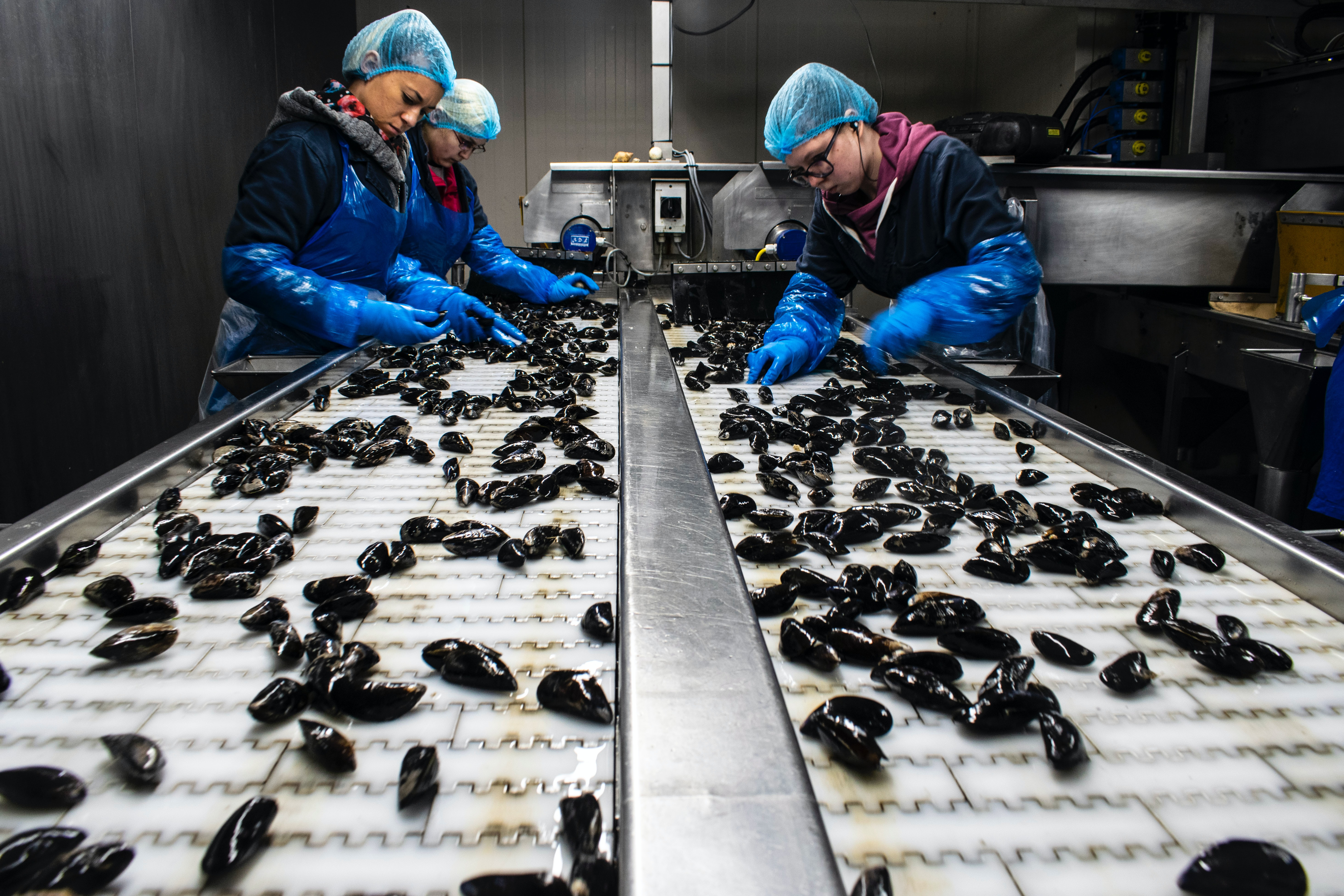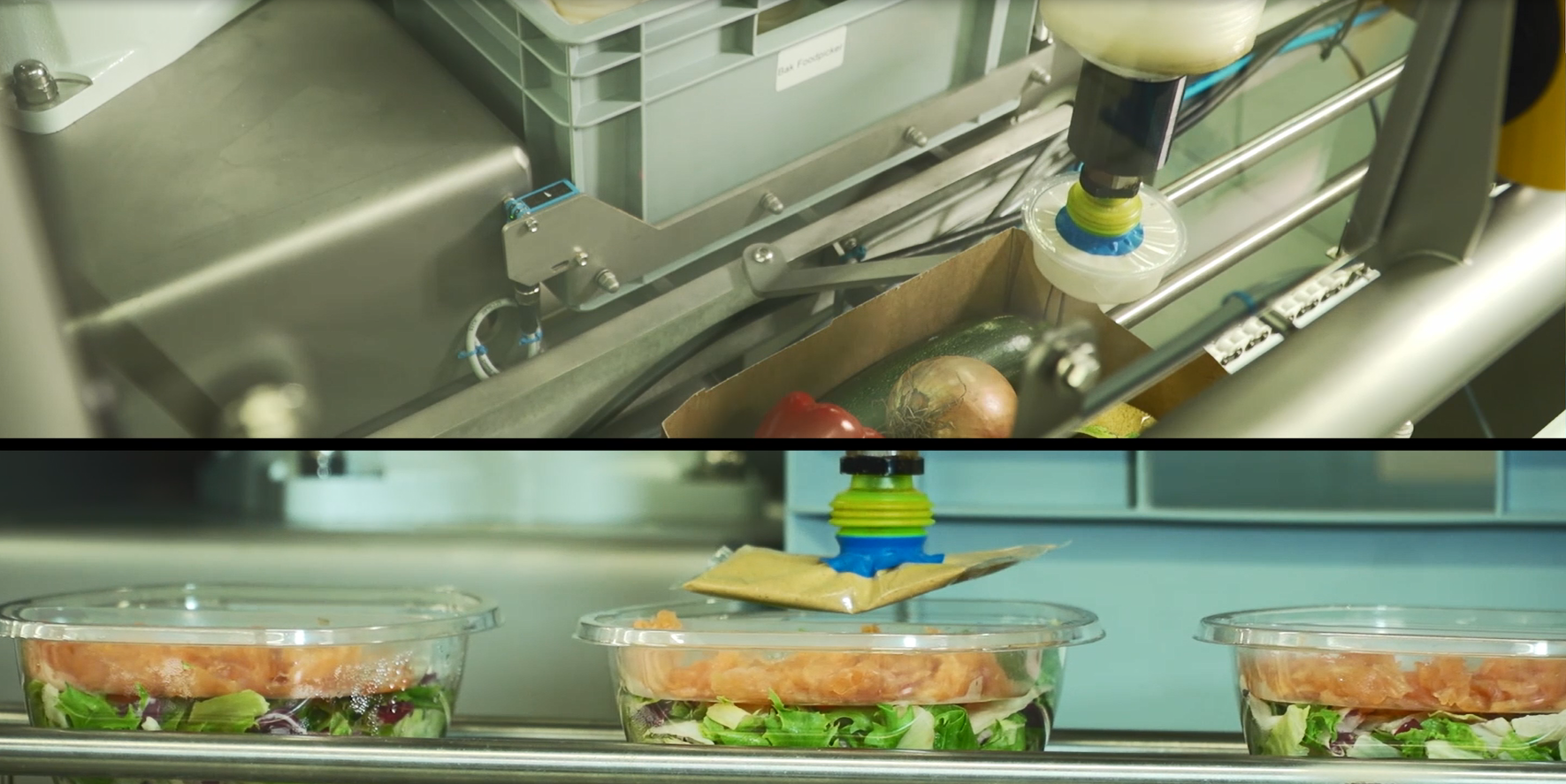Challenge #1: Keeping up with fluctuating demand
The onset on Covid-19 brought on waves of panic buying, where consumers bought more products than they normally would in order to stockpile supplies. This placed a strain on both the retail sector and the food industry as a whole, as both struggled to meet this sudden new demand.

Since then, consumer eating habits have changed, and continued to evolve, so food manufacturers who were able to scale production outputs with changing demand were most successful. Consumer demand has yet to to pre-pandemic stability, fluctuating in line with restrictions, shortages and restaurant closures, among many other factors.
BBQ boom
In summer 2020, the food industry saw a huge increase in the number of UK households buying BBQ products. Since the UK Government eased restrictions on socialising after the hottest and driest May since 1896, many people decided this was the prime time to host a BBQ.
The popularity of BBQs caused a dramatic increase in sales for meat, fish and poultry products during the second and third quarters this year. During this time, sales of fresh meat and poultry saw a year-on-year increase of 23.6%, and sales of sliced meats grew by 5.8%.

Read more: The rise of the British BBQ
More time for mealtimes
The first national lockdown gave people more time to prepare meals, and due to limited availability of leisure activities, enjoying a meal together became the highlight of the day for many.
The raw meat and fish sector experienced major growth, while cooked and sliced meats, (while still popular) saw dampened growth. People stopped buying quick, convenience foods for lunch, and instead started to cook more from scratch.
Seventeen million more sales of meat, fish and poultry products were recorded during 2020 than 2019, due to great weather and lockdown restrictions. An estimated 10 million BBQs were held throughout the UK during Easter, and if we experience another good summer, 2021 could hold similar growth for the meat, fish and poultry sectors.
Challenge #2: Sustainability
The ongoing push for more sustainable practices in the food industry is primarily centered around packaging materials. Numerous debates have ensued, often pitting plastic, paper and glass against one another.

Read more: Is mono-plastic or flexible packaging better for sustainability?
The value of recycling
A big obstacle to packaging materials being recycled is contamination. Food products contaminate a lot of packaging in the current recycling system, meaning that a very small amount can be reused.
Contamination in recycling plants is a huge problem, as unwashed plastics, which are otherwise recyclable, often have to be wasted. If the level of contamination is high enough, whole recycling loads can be diverted to landfill. Mono-plastic trays and glass jars are much easier to clean compared with flexible plastics and paper-based packaging, but are not anywhere close to a perfect solution.
The cost of sustainability
Consumers likely won’t want to pay more for items packaged in eco-friendly packaging, so retailers will be trying to minimise price increases for customers. However, this just means the cost must be covered elsewhere. As a result, food manufacturers need to have a renewed focus on minimising waste, in terms of both product and packaging, as well as ensuring machine downtimes are kept to a minimum.
Challenge #3: Labour shortages
The effects of Brexit, and subsequently Covid-19, have meant that food industry workers are in short supply. This poses a problem for an industry which relies heavily on foreign labour.

Brexit negotiations have also caused a lot of uncertainty for non-UK nationals, meaning that many of them have chosen to return to their country of origin. The arrival of Covid-19 then sped up this mass migration, as most people wished to be with their families during that time. This mass migration placed a huge strain on food manufacturers, as much of their workforce is now unavailable.
In addition to this, the cost of labour has been steadily rising, due to new legislation surrounding the National Living Wage. Employers are having to pay more and more each year to keep their current workforce, and for some, this increase in expenses is simply not sustainable.
Read more: How food manufacturers are beating labour shortages
How this impacts the food industry
Manual production lines have suffered the most from a lack of labour, so it’s no surprise that as many as 94% of food packaging operators are currently using robotics, according to the Association for Packaging and Processing Technologies.

Factory staff are in shorter supply, as the UK food industry still relies heavily on the labour of non-UK nationals who are employed primarily on temporary contracts.
Since just under half of all food factory workers are from the UK, the Food and Drink Federation estimate that the nation will need 140,000 more British workers by 2024 in order to compensate for the shortage.
The lack of skilled workers
A significant part of this problem is the lack of skilled workers. The first and most obvious solution is to upskill existing staff and offer training programmes and support employee development. After all, investing in the high quality machinery is only effective if employees are sufficiently trained and confident in how to use it.
Read more: Why is training important?
The automation solution
Since manual labour is increasingly hard to find, food processors have opted for automated solutions with minimal margins of error and no downtime. From an employer’s point of view, machines offer many benefits aside from the obvious increased speed and efficiency. Using fully automated solutions also frees employers from complying with new National Living Wage laws.
Read more: How automation can improve the prospects of factory workers
Challenge #4: Robotics, automation and advances in Technology
Over the past few years, there have been many exciting innovations in automation for the food industry. The prevalence of labour shortages during this time has meant that automated solutions have become crucial in helping food production companies stay in business.
Today, the use of robotics and advances in technology is part of daily life within most factory floors. This is hardly surprising as increasing automation within a factory environment can dramatically increase levels of speed and production. Some of the benefits this new technology offers can be almost impossible to replicate manually and can offer an excellent return on investment.
For instance, vision system technology is now considered to be an essential part of many industrial processes as this can offer fast, accurate and reproducible inspection capabilities at a competitive cost, ensuring an excellent level of quality control safeguarding and preventing costly product recalls.
Staying aware of the latest developments can be both confusing and stressful, not to mention expensive. That’s why having a true partnership with a trusted technology supplier is key to identifying and utilising relevant technologies that can genuinely make a positive impact to your business.
Whichever industry you work in, there’s no denying the pivotal role that automation, robotics and technology plays. However, whilst this may go some way to filling the labour gap, human employees are still required for their problem-solving abilities as well as an ability to analyse issues and manage output.
None of us can predict the future but to face the existing challenges of changing consumer demand, a changing climate, labour shortages and rapid advances in technology, companies need to take action and plan carefully to mitigate the risk from all of these threats.
Worried about the future? Talk to Sealpac UK & Partners. We have 25 years’ experience in helping food manufacturers future-proof their operations.

